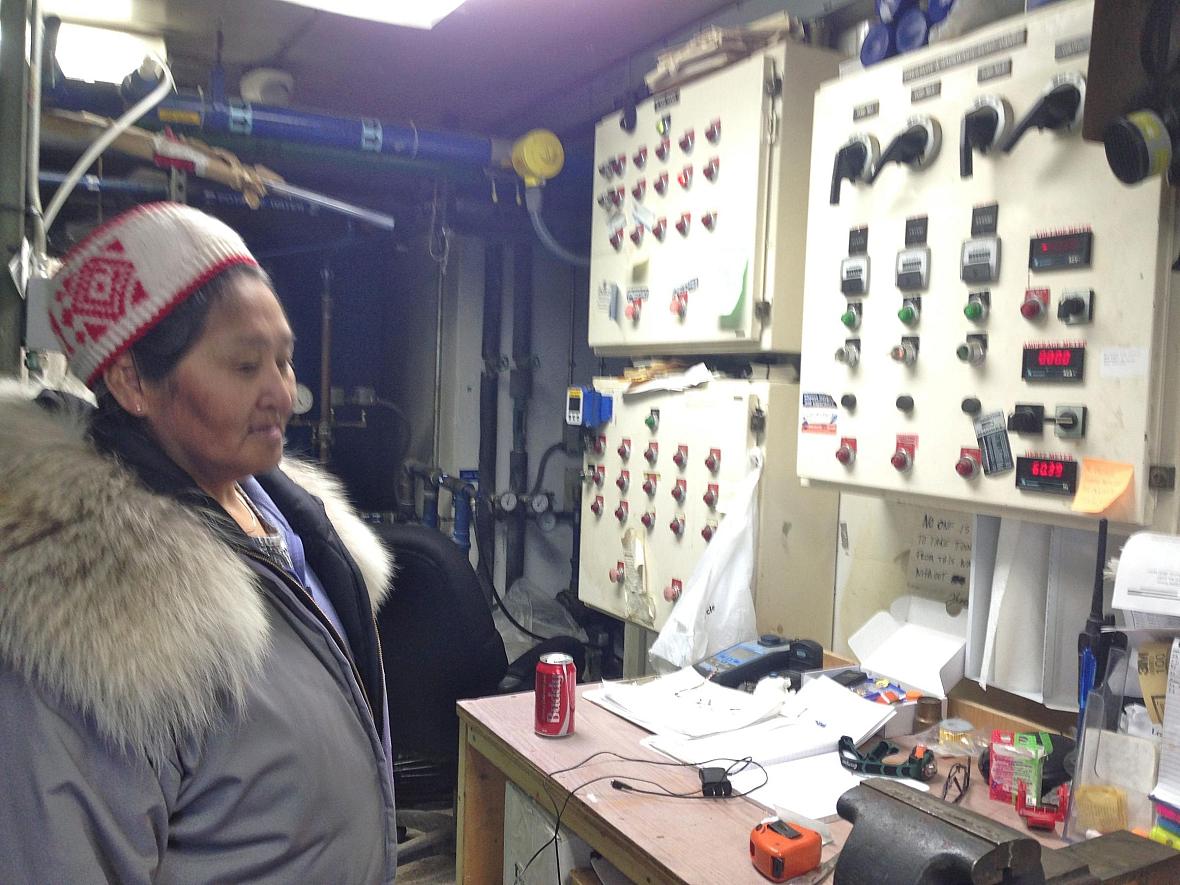Kick the Bucket: Rural Alaskans struggle to keep water and sewer systems running (Part 3)
Joaqlin Estus reported this series as a fellow in the 2014 National Health Journalism Fellowship, a program of the USC Annenberg School for Communication and Journalism. This story was originally broadcast by Alaska's KNBA radio station.
Earlier installments in this series can be found here:
Kick the Bucket: Health implications of Third World conditions in Alaska (Part 1)
Kick the Bucket: Lack of funds hampers development of modern sanitation in rural Alaska (Part 2)

Kivalina City Manager Janet Mitchell says the city's long-time water plant operator is the only person who knows all the weak points, quirks, and band-aid fixes at the plant. "If he leaves," said Mitchell, "I quit. It'll be just hopeless."
Even rural communities that have raised the money to build modern sanitation systems face the threat of their ultimate failure due to the lack of funding for operations and maintenance, wiping away whatever health gains were achieved.
The Yukon-Kuskokwim Health Corporation Environmental Health and Engineering Department provides technical assistance to water treatment plant operators in the region. Here’s a bit of the conversation during a recent teleconference.
“I don't know if any of them are working,” said one of the operators. A YKHC employee replied, “Yeah, it's just that temperature sensor on … “
One of the issues that comes up is the lack of funding for minor repairs.
“If we could spend a thousand dollars to save 24, that'd be great,” the conversation continued.
Big savings could be achieved by cutting energy use – 40 percent of operating costs.
Kwethluk, also in southwest Alaska, is getting a new piped water and sewer system. At the new Kwethluk water plant, YKHC Remote Maintenance Worker Bob White says new boilers used to heat water there use about half as much fuel as older ones, but he says they’re out of reach for many villages.
“Sometimes they just don't have the cash to make the jump to buy into the new equipment, to buy the new controls,” said White. “This thing has a little computerized control that automatically has turned the boiler temperature down because it's warmer out today.”
Back in 1995 the southwest Alaska village of Tuntutuliak got a new water and sewer system too. Villagers saw dozens of homes fitted with tanks to store water and waste. Workers could deliver water and pick up sewage in tanks hauled by snow-machines or ATVs.
But resident Robert Enoch says water delivery stopped a few years ago.
“The water delivery vehicles, the haul tanks, don't work anymore. The only thing that works is the sewer haul, the pump-out systems.”
That leaves villagers hauling water or ice for household use… and cutting back to less water use than needed for the frequent hand washing needed to prevent the spread of viruses and bacteria.
Labor makes up 44 percent of operating costs so the village hired only part-time workers. It charged people about five percent of the median household income. In some villages fees are as much as seven percent. Urban Alaskans pay less than one percent. But without the economies of scale that come with larger populations, the village couldn’t replace equipment.
And rural systems are aging out. Gavin Dixon is Rural Energy Project Manager for the Alaska Native Tribal Health Consortium. Speaking to legislators from rural Alaska, he said the average age of rural water plants is 23 years, more than their expected design life of 20 years.
“A lot of these systems are already at the end of their useful life,” said Dixon. “There’s some of these plant operators that don’t even want to open or close a valve because of the fear it could result in a catastrophic issue there.”
YKHC Environmental Health and Engineering Director Brian Lefferts says the state government already supports energy, communications, and infrastructure. The only public utility, he says, that isn’t subsidized is water and sewer.
“If we had something like power cost equalization for sanitation,” said Lefferts, “where people could pay rates similar to what they pay on the road system or in the rail belt communities. We’d have a lot more systems that are online and not struggling with the problems that they have now.”
The state has long shared oil revenues with municipalities, and in many small towns and villages, those revenues make up the lion’s share of local budgets. But with the price of oil half what it was a year ago, legislators have taken steps to end the municipal revenue sharing program that got its start in 1970, further reducing available funds for water and sewer operations and maintenance.
There’s got to be a better way. We’ll hear about some proposed alternatives in the next segment of “Kick the Bucket.”

